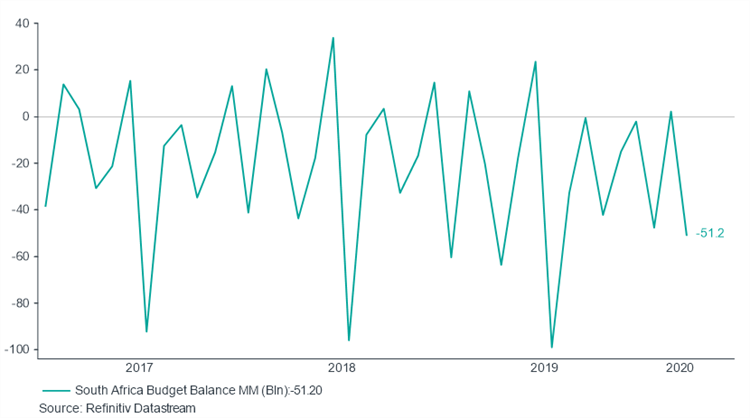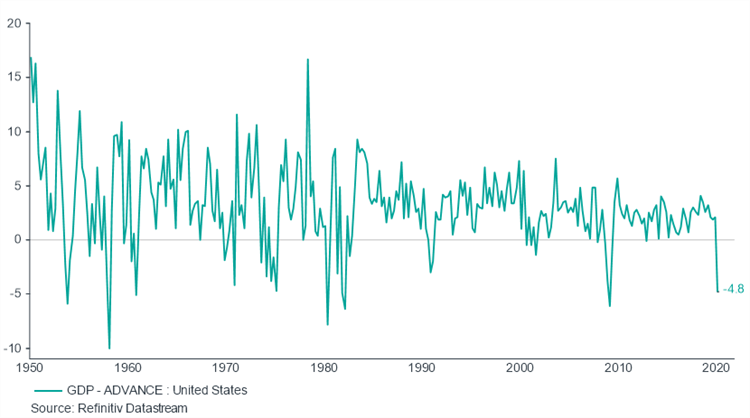Day 39 of Lockdown | Market Update
The sixth in a series of weekly lockdown-inspired market commentaries; this being the first to be published during Stage Four.


This is the first time I’m writing to you from Stage Four of the lockdown; having done so weekly during Stage Five. Hopefully this will be one of only a handful of such instances as South Africa gradually progresses through Stages Three, Two and One without any regression to harder states of lockdown; eventually culminating in the lifting of a lockdown of any kind entirely and a declaration by President Cyril Ramaphosa that the coronavirus-triggered State of Distater is no longer required. During March, Daily Maverick published a helpful article on the difference between a State of Disaster and a State of Emergency which you can find here. The legalities of which are of more than passing academic interest as this is highly likely to be a recurring theme as our Nation transitions between lockdown stages.
By the time you read this our Group’s Executive Committee will have met to finalize our Preparedness and Response Plan. As providers of financial services, all Group companies will be able to return to the office in one form or another during Stage Four. Expect further communication during this coming week and/or an Operational Update in this email next week Monday. Our original COVID-19 Business Continuity Plan can be found here.
The first part of last week was one of risk assets being firmly on the front foot. As examples, the rand had rallied to very nearly 18 to the US dollar and the FTSE JSE All Share Index rose above 50,000 points for the first time since the second week of March (resources continue to outperform financials and industrials). That unwound, however, to the back-end of the week as, on Wednesday, S&P Ratings Agency followed the recent Moody’s downgrade with a downgrade of their own, taking South Africa to BB- or three notches below investment grade. Their last review was in November 2019. Much of this was on the back of the very obvious further deterioration in the country’s financial situation attributable to its COVID-19 defense. S&P did, however, place our country on a stable outlook.
Then on Thursday, in a briefing to the finance; appropriations and public accounts committees, Finance Minister Tito Mboweni indicated National Treasury’s worst-case scenario of 7 million job losses potentially pushing the unemployment rate above 50%. If that wasn’t alarming enough on its own, the South African national budget balance for March was announced at the same time: the market’s expectation was for a deficit of circa R22 billion, the actual deficit was R51 billion. Unsurprisingly, the rand closed the week back towards 19 to the US dollar despite news that the New Development Bank (more often referred to as the BRIC’s Bank) was in the final stages of granting South Africa a $1.5 billion loan.
South African Budget Balance, Quarterly, ZAR

Internationally, last week was one of Q1 GDP updates with the United States (down 4.8%, the first contraction since 2014 and its largest contraction in 12 years), the Eurozone (down 3.8%) and Australia (down 5%) all confirming widely-anticipated contractions in the size of their economies. In addition, weekly initial jobless claims data in the US indicated that job losses have surpassed 30 million during the pandemic (for relative scale purposes: that’s about forty percent of the size of the entire South African population). Also last week, the US Federal Open Market Committee met and elected to leave interest rates unchanged at 0.25% per annum. The Bank of England and the Reserve Bank of Australia are both due to meet this coming week. The Refinitiv Smart Estimate is for both banks to hold their base rates constant, the former at 0.1% and the latter at 0.25%.
US GDP, Quarter-on-Quarter, Seasonally Adjusted and Annualised, USD

As the global workforce begins its slow migration back to normal operating conditions, the risk of a second wave of infections has increased. And a slow migration it is very likely to be: expectations are that coronavirus is likely to be with us for two years before we fully understand it. Two years being two full seasonal cycles. As the financial markets process this very modern, very slow mass migration, the chance of a W-shaped market (the bear market we saw in March/April, followed by the bull run in late April, potentially followed by a second leg down and somewhere down the road a second bullish-phase makes the shape of a W) has increased as evidenced by Berkshire Hathaway’s $50 billion (mostly balance sheet related) and Amazon’s $4 billion (most income statement related) losses announced last week together with Shell’s first dividend cut since a World War II.
Stay safe. Stay positive. Wear a mask. Access our weekly chart book here.
Market Data
| Asset Class | Last Week | Last Month | Last Year | Last 3 Years |
| Local Cash | 0.10% | 0.50% | 7.14% | 7.28% |
| Local Bonds | 0.00% | -2.23% | -6.20% | 3.84% |
| Local Property | 4.08% | 8.29% | -45.98% | -21.36% |
| Local Equities | 1.63% | 15.44% | -10.78% | 1.08% |
| Global Property | 3.51% | 10.09% - | 19.83% | -2.21% |
| Global Equity | 1.31% | 12.52% | -6.18% | 4.18% |
| USDZAR | -0.59% | 4.95% | 31.25% | 12.18% |
Helpful Resources
Please take the following into account:
- Wherever possible, total return indices have been used. These include the effects of dividends, interest and coupon payments in addition to price movements. Please take data presented as, generally, inclusive of price and income effects.
- Performance and other market data excludes the effect of income, capital gains and dividend withholding taxes as well as excluding advice, administration and asset management costs. Please take data presented as exclusive of tax and cost effects.
- Data is based on the previous Friday’s closing prices but as the situation is fluid the market commentary may or may not extend beyond Friday’s close. Other data, links, estimates, etc referred to are correct as at the time of writing.
- Collective investment schemes and other similar products performance information is based on data provided by Morningstar, which is signed off the first week of each month. In general, we will refrain from covering this until sign-off is obtained.
- NFB Asset Management publishes a monthly newsletter called The Rationalist. For as long as these weekly emails are being sent we have elected not to publish The Rationalist. Expect the monthly NFB AM schedule to resume once the lockdown is lifted.













